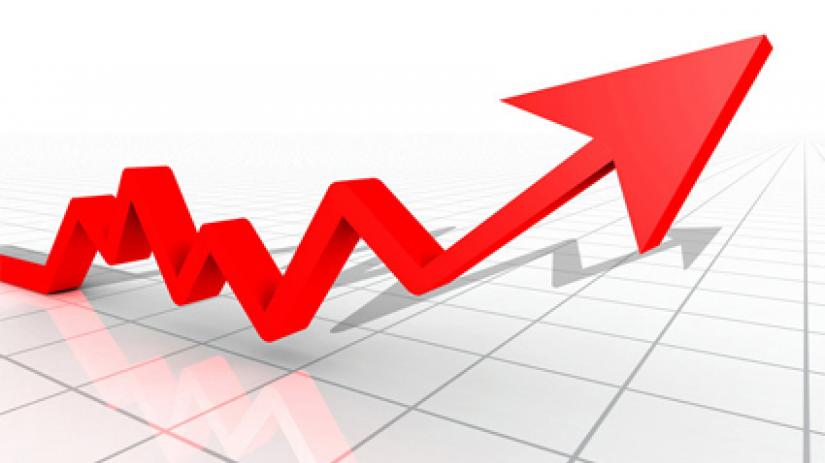 The economy of Bangladesh is estimated to expand by 7.3 percent in the current fiscal (July 1, 2018 to June 30, 2019), which is 0.3 percentage point higher than the previous projection, the World Bank said in a report on Tuesday attributing this to recovery in remittance inflows.
The economy of Bangladesh is estimated to expand by 7.3 percent in the current fiscal (July 1, 2018 to June 30, 2019), which is 0.3 percentage point higher than the previous projection, the World Bank said in a report on Tuesday attributing this to recovery in remittance inflows.
In its latest Global Economic Prospect report released Tuesday, the World Bank also increased the forecast for the next two years as well. Bangladesh’s GDP is now estimated to grow at 7.4 percent in 2020 and 7.3 percent in 2021 which is 0.6 percentage point and 0.5 percentage points higher than the previous projection of the World Bank.
In South Asia, however, India is the fastest growing economy whose GDP is estimated to grow at 7.5 percent for the next three fiscal years of 2019, 2020 and 2021. On the other hand, Pakistan’s growth is expected to slow further to 2.7 percent in fiscal 2019/20, which begins July 16.
“In Bangladesh, GDP is estimated to expand by 7.3 percent in FY2018/19 (July 1, 2018 to June 30, 2019), 0.3 percentage point higher than the previous projection, as a recovery in remittance inflows, stemming from improving economic activity in source countries supported private consumption,” the report said.
While private investment benefited from the improved outlook for political stability, public investment was underpinned by progress in infrastructure projects, it said. In the first half of FY2018/19, exports to the United States and China increased significantly, especially textile and apparel, in part reflecting trade diversion due to bilateral tariff increases between these two countries, it said.
Observing that in Bangladesh, annual growth is projected to average 7.3 percent over the forecast horizon, the World Bank said activity will be underpinned by strong infrastructure spending and solid private investment with some easing of infrastructure constraints.
Slowing activity in major trade partners’ economies (such as the Unites States and the Euro Area) will constrain the contribution of net exports to growth next fiscal year, it said.
According to the World Bank, South Asia growth remains robust despite headwinds from weakening global trade and manufacturing. Regional growth is expected to expand 6.9 percent in 2019, underpinned by strong domestic demand. Private consumption and investment remained robust in much of the region, offsetting a slowdown in Pakistan.
India, the largest economy of the region, is estimated to have grown 7.2 percent in fiscal year 2018/19, which ended March 31. A slowdown in government consumption was offset by solid investment, which benefitted from public infrastructure spending, it said.
 National
National
40957 hour(s) 18 minute(s) ago ;
Morning 08:13 ; Thursday ; Jun 19, 2025
Bangladesh estimated to grow by 7.3pc in FY19, says World Bank
Send
Lalit K Jha, Washington
Published : 06:00, Jun 06, 2019 | Updated : 06:00, Jun 06, 2019
Published : 06:00, Jun 06, 2019 | Updated : 06:00, Jun 06, 2019
0 ...0 ...
/pdn/
Topics: Top Stories
- KOICA donates medical supplies to BSMMU
- 5 more flights to take back British nationals to London
- Covid19: Rajarbagh, Mohammadpur worst affected
- Momen joins UN solidarity song over COVID-19 combat
- Covid-19: OIC to hold special meeting
- WFP begins food distribution in Cox’s Bazar
- WFP begins food distribution in Cox’s Bazar
- 290 return home to Australia
- Third charter flight for US citizens to return home
- Dhaka proposes to postpone D8 Summit
Unauthorized use of news, image, information, etc published by Bangla Tribune is punishable by copyright law. Appropriate legal steps will be taken by the management against any person or body that infringes those laws.
Bangla Tribune is one of the most revered online newspapers in Bangladesh, due to its reputation of neutral coverage and incisive analysis.
F R Tower, 8/C Panthapath, Shukrabad, Dhaka-1207 | Phone: 58151324; 58151326, Fax: 58151329 | Mob: 01730794527, 01730794528


